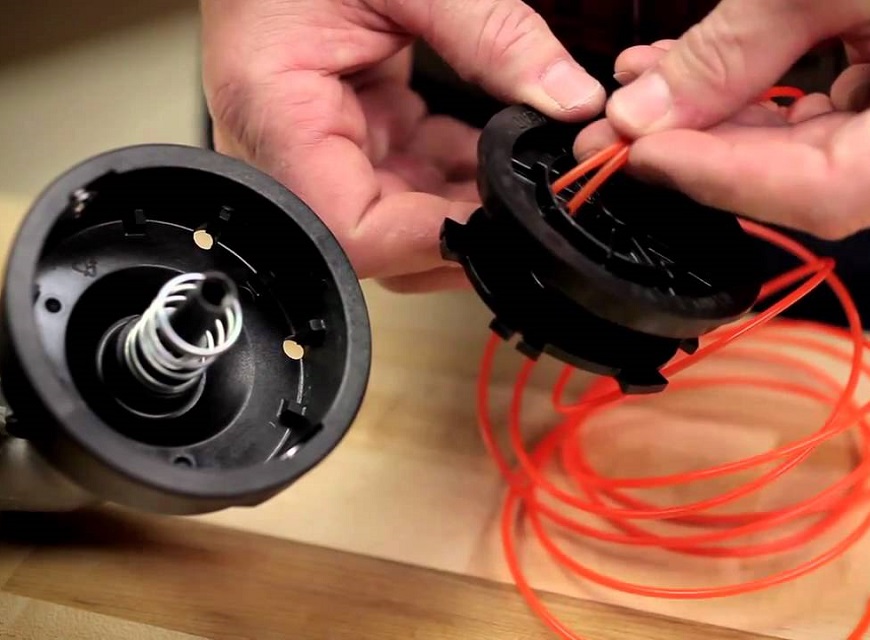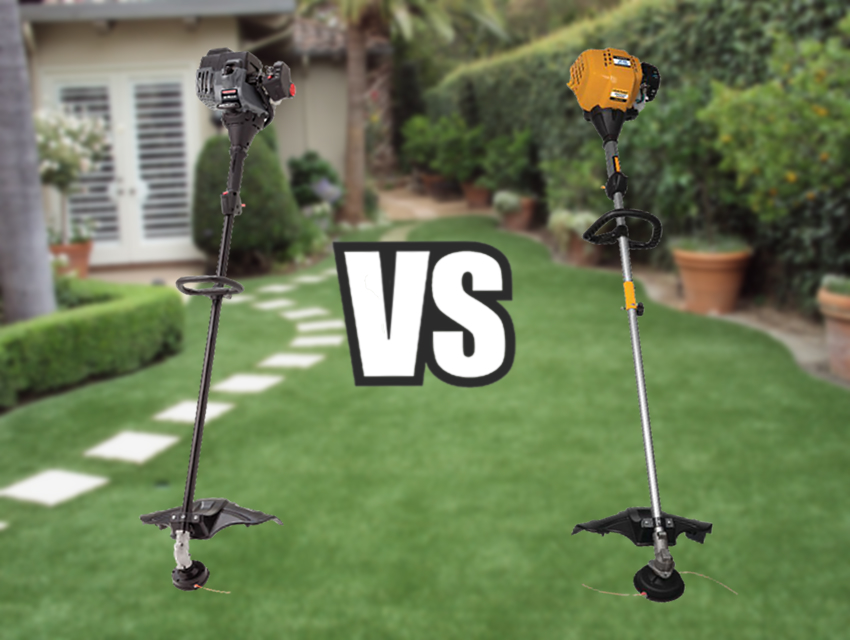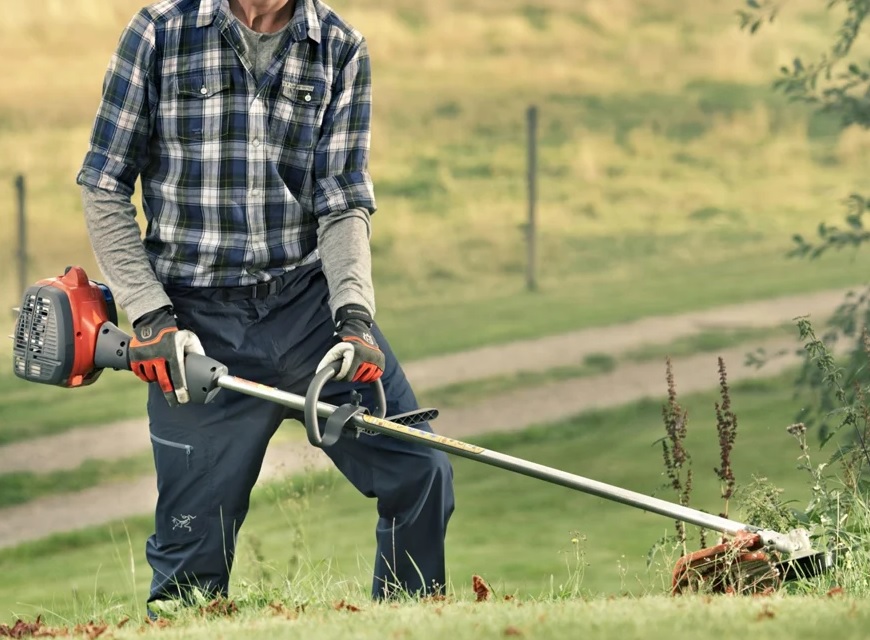
According to research, a nice lawn can add as much as 12% Trusted Source Does Landscaping Increase Your Property Value? - SFGATE Landscaping can add tens of thousands of dollars to the value of your property. In fact, it is one of the few home improvements you can make that not only adds value immediately, but also increases in value as the years go by. While interior decor and design concepts regularly go out of style and mechanical systems wear down, plants grow fuller and more robust as the years go by. homeguides.sfgate.com to the value of your home. If you want to keep your lawn in the best condition possible you will need a trimmer at some point to keep the edges neat and tidy. When you look for the best trimmer you will notice that there is debate about the best tool for the job. The curved vs straight trimmer controversy is more than a simple preference. Although they perform a similar function they work in different ways and choosing the right one will affect how you work.
Both tools have their own set of pros and cons and without owning one for a while it can be hard to evaluate how they work for each person. For some people, comparing a straight shaft vs. curved shaft trimmer may not be too important. But, if you have a larger lawn and you want to work efficiently the differences can be significant. In this guide we will examine how these two tools work to help you make an informed purchasing decision.
Before you rush to buy the best string trimmer with straight shaft that you can afford, let’s take a look at the importance of the shaft when operating a trimmer. The shaft forms the main section of the trimmer and this equally true if you have an electric, gas or battery powered model. On every string trimmer you will find the controls at one end and the spinning head that cuts at the other end.The surface of the trimmer shaft is smooth because the components that make everything work are contained inside the hollow structure. The cords, wires and components located there are different for curved and straight shaft trimmers.
A curved shaft trimmer has wires that are curved to run throughout the length of the shaft. The curve of the shaft can cause the wires to flex when the tool is operated. As you might imagine, this can cause a problem because flexed wires are under strain and this can make them prone to breaking. A straight shaft trimmer doesn’t suffer from this problem because the wire bundles are straight and less susceptible to bending issues.
Another consideration is the balance of the trimmer and the shaft shape will have a major impact on how the tool feels when working. The best string trimmers are light and easy to use, but over time working with an extended length can cause fatigue. When we become tired, it’s easy to feel off balance and this can affect how you work. When you’re thinking about which is better, straight or curved shaft trimmer this may be your primary concern. Many people find a curved shaft trimmer to be easier to have better balance and they can be operated for long periods without causing too much fatigue. On the other hand, a straight shaft trimmer can be hard to operate for long periods with using an additional grip or even a body harness.
Every lawn could benefit from a good string trimmer because it can access and trim areas that are not easy to reach with your lawnmower. Many people have part of a lawn that runs up along the side of their home or along a fence line. Trying to trim these areas with a bladed tool can be an awkward and frustrating experience and the results are less than optimal. Having a string trimmer at your disposal can solve these problems and it allows you to trim around delicate plants and flowers with ease. Even thicker patches of weeds or grass that would choke a lawn mower can be tamed with a string trimmer. Some string trimmers even have attachments that allow the user to tackle a variety of jobs, including: sweeping, edging, brush cutting, cultivating, pole sawing and hedge trimming. Having these attachments can make the string trimmer more flexible and versatile for many different landscaping tasks around your home or business.
The design of a straight shaft string trimmer will extend the reach making this a great option for taller users. If you’re tall and you want to avoid back pain when trimming, a straight shaft model may be the ideal solution. The driveline is level which typically generates less vibration than a curved trimmer which can make the tool easier to handle. Most straight shaft trimmers have a lower gear reduction which translates into more torque which is ideal when working at extended tasks. Over a longer period of trimming a strain trimmer will be more comfortable if you’re taller or you can compensate for the length with a harness.
If you’re starting a landscaping business or you’re interested in one or more of the attachments mentioned above a straight trimmer may be the best choice. This type of trimmer is usually more flexible and attachments are more likely when compared to a curved shaft alternative.
When it comes to the straight shaft vs. curved shaft trimmer choice, the straight option may lose some viability when you consider the cost and weight of the tool. A straight trimmer will typically cost more and the length of the shaft will affect the balance for most users. If you watch professional landscapers at work they are likely to be using straight trimmers. Although they cost more they have better components and the flexibility makes them a versatile choice for professionals. If you go with a pro grade model with more features and improved durability the price can be significant.
When you’re looking for a curved shaft string trimmer, you will notice that the shaft is usually shorter. This means that the trimmer is more likely to be lighter and easier to use for longer periods of time. The curve of the shaft will make the trimmer feel more balanced and most people will notice that it’s easier to maneuver in tight spaces. The reduction in both length and weight will make the curved shaft trimmer a natural choice for shorter uses. Another group that should be interested in this form factor are people that have smaller lawns that require light trimming. If you have a smaller yard you may notice that you can get around the space quickly with this trimmer design. As an added bonus, curved shaft string trimmers are usually less expensive.
Before you rush out to buy the best weed eater with a curved shaft on the market, it’s important to note that there are some drawbacks to this design. If you’re a taller person using a curved shaft model will feel uncomfortable and this will be exacerbated over longer working periods. A curved shaft design can also cause problems when you need to trim underbrush or under any lawn furniture that you may have. The curved shaft also affects the driveline, less torque will be generated and this translates into less cutting power. As we mentioned earlier, a curved shaft may be more prone to cord or cable breaks that may affect the reliability.
If you’re interested in using attachments with your trimmer a curved shaft is the wrong choice. These types of trimmers don’t accommodate most attachments and you will be limited to using a nylon trimming string.
So, the next logical question would be, which is better, a straight or curved shaft trimmer? As you can see, the answer to this question will vary depending upon the person asking. Both the straight and curved shaft trimmers have their own unique advantages and disadvantages to consider. How and where you use the trimmer will affect your final decision and even your height is an important factor. When you want the best results for your lawn it’s important to avoid fatigue and balance is an issue.
Using a straight shaft string trimmer will be a logical choice for users that need a durable option that can fit various attachments. A landscaping professional may use a trimmer multiple times each day and they need reliable results. After all, when you’re running your own business, time is literally money and you need to work efficiently. Working with a straight shaft will also reduce strain and fatigue for taller users and pros that use a harness.
The curved shaft string trimmer is available at a more affordable price point and it has considerable appeal for more casual users. If you only intend to trim a smaller lawn and yard you can cover a lot of ground quickly. The lighter construction and improved balance will ensure that you can maneuver easily if you don’t have obstacles to work around. Shorter users will prefer a string trimmer that isn’t taller than them and this type of unit will be sufficient for light trimming tasks.
There are straight and curved shaft trimmers available in both gas powered and electric variants. The best electric weed eaters are easy to store because you don’t need to keep gas on hand, which can cause concern due to combustibility. Many people hate the smell of gas and gas powered models can be noisy and heavy. But, if you have a larger lawn to trim, a plug-in electric model may be a poor choice due to extension cord problems. For this reason many electric trimmer users opt for a battery powered unit, but you may need spare batteries on hand to tackle longer trimming sessions.
When you purchase a gas or battery powered string trimmer, you can get it as a stand alone unit or invest in a powered base. This is a motor or engine that allows you to add different attachments to the head. This is typically available on the better straight shaft string trimmers. If you need one or more of the extra tools to use with your trimmer, this can be a good investment if you have the budget and storage space.
If you have a larger area with tougher areas of grass and weeds you will find that a battery powered trimmer isn’t a good option. In this case, an electric model with a power cord may suffice or you may need a gas powered unit. If you’re really struggling with the bush you may want to look at a bladed trimmer attachment. The easy way to determine this is to look at the string as you’re trimming in your yard. If the string tends to curl around the weeds stems without cutting you need to use a blade head instead.
Most string trimmers are carried when trimming and others are walk-behind models. These feature a trimming point set at the front of a set of wheels and they have a wide cutting width. They are a good option if you have a lot of brush they can be tricky to maneuver. If you have heavy brush, a string or bladed straight trimmer with a harness to reduce fatigue may be a better option.
Many string trimmers have a gap where the cutting head meets the trimmer shaft. If the gap is large it can cause tall pieces of grass to wrap around the trimmer shaft. If you don’t want to spend time untangling sections of grass, go with a trimmer that has a smaller gap or a cutting head that’s easy to remove.
Hopefully, we’ve shown that a string trimmer can handle a wide variety of jobs in your yard. The size of the trimming task or other work if you opt for a straight shaft trimmer with attachments is important to consider. If you’re only working in a smaller yard it would be overkill to invest in a model that will work for hours on end. But, if you have a larger yard, a farm or you want to start a landscaping business, it’s a different story. In that scenario you need a straight shaft trimmer that’s gas powered to handle the workload.
Hard working tools do fail and this is especially true when it comes to power tools. The quality of the trimmer that you purchase will be a factor, but the frequency of use and the type of trimming is also important. If you find that you’re purchasing trimmers and they fail quickly it’s likely that you need a more substantial model.
Hopefully we’ve demonstrated that you don’t necessarily need the best gas string trimmers on the market to keep your lawn tidy and the weeds at bay. If you have a standard sized yard with some simple landscaping and minimal architecture you don’t need an elaborate trimmer. In many cases a more affordable curved shaft trimmer will be sufficient to trim your lawn and yard. This trimmer should give you a few years of service if you take care of it and store it safely when you’re done with it.
If you have a more substantial area to trim with a lot of decking, bushes, shrubs, rockscape and other areas that are tricky to navigate a straight shaft trimmer may be a better option. In this case the additional investment will be worth the time savings you can make and the reduced potential for lower back pain.
We hope that this article has helped to clear up the differences in the curved vs. straight trimmer choice. If you take the time to evaluate your needs first, you will find the ideal trimmer to meet all your trimming requirements.





